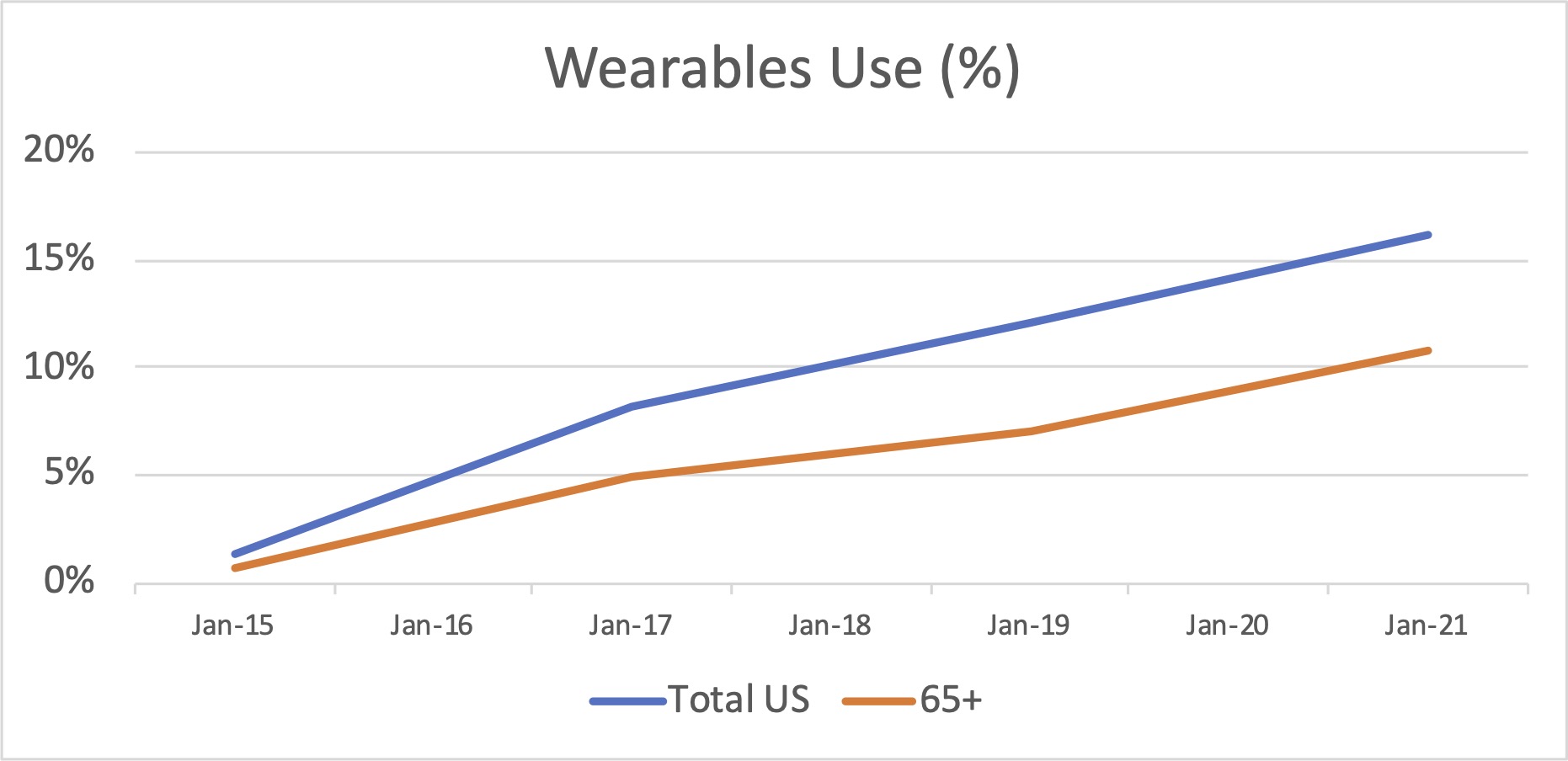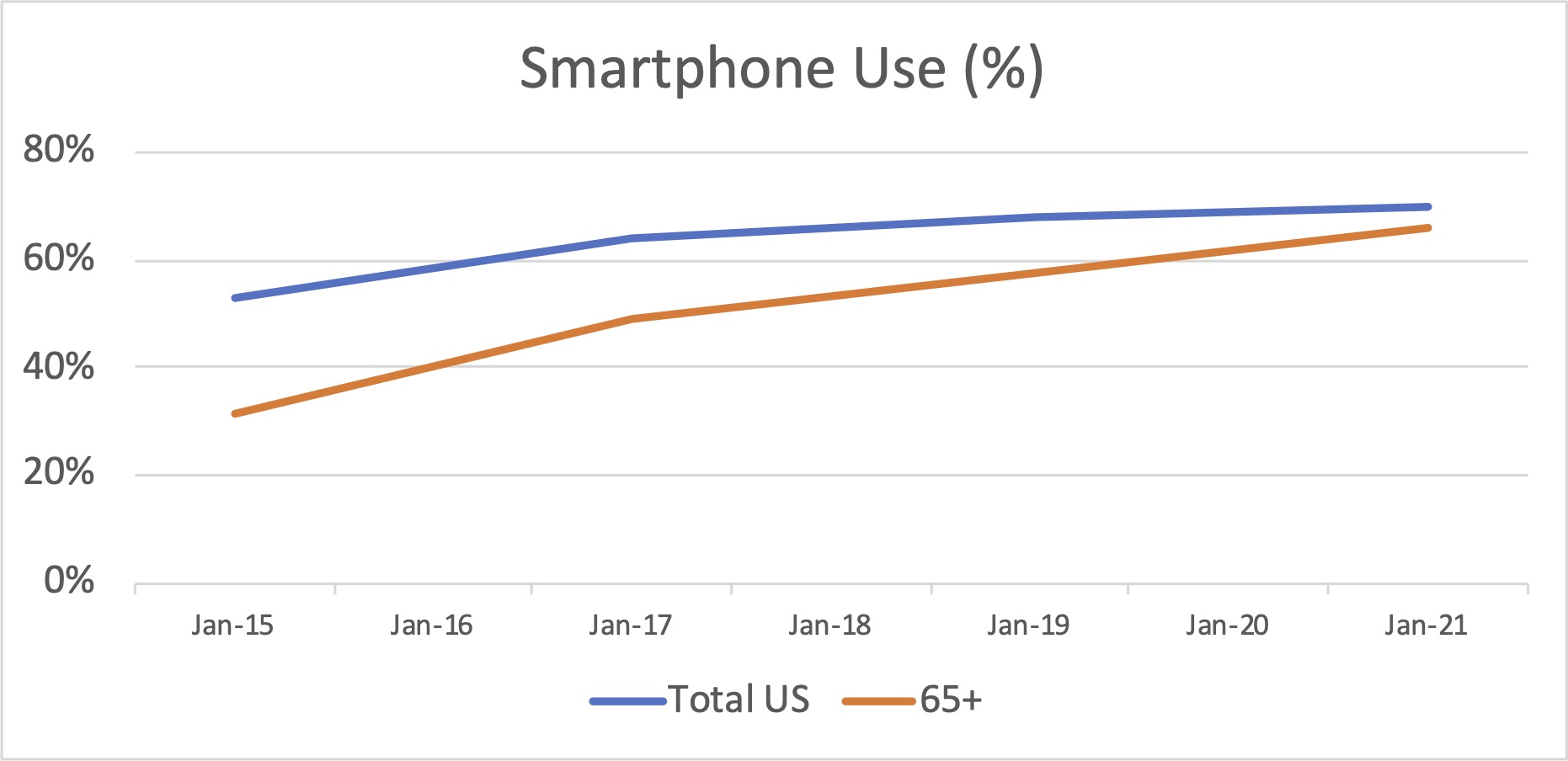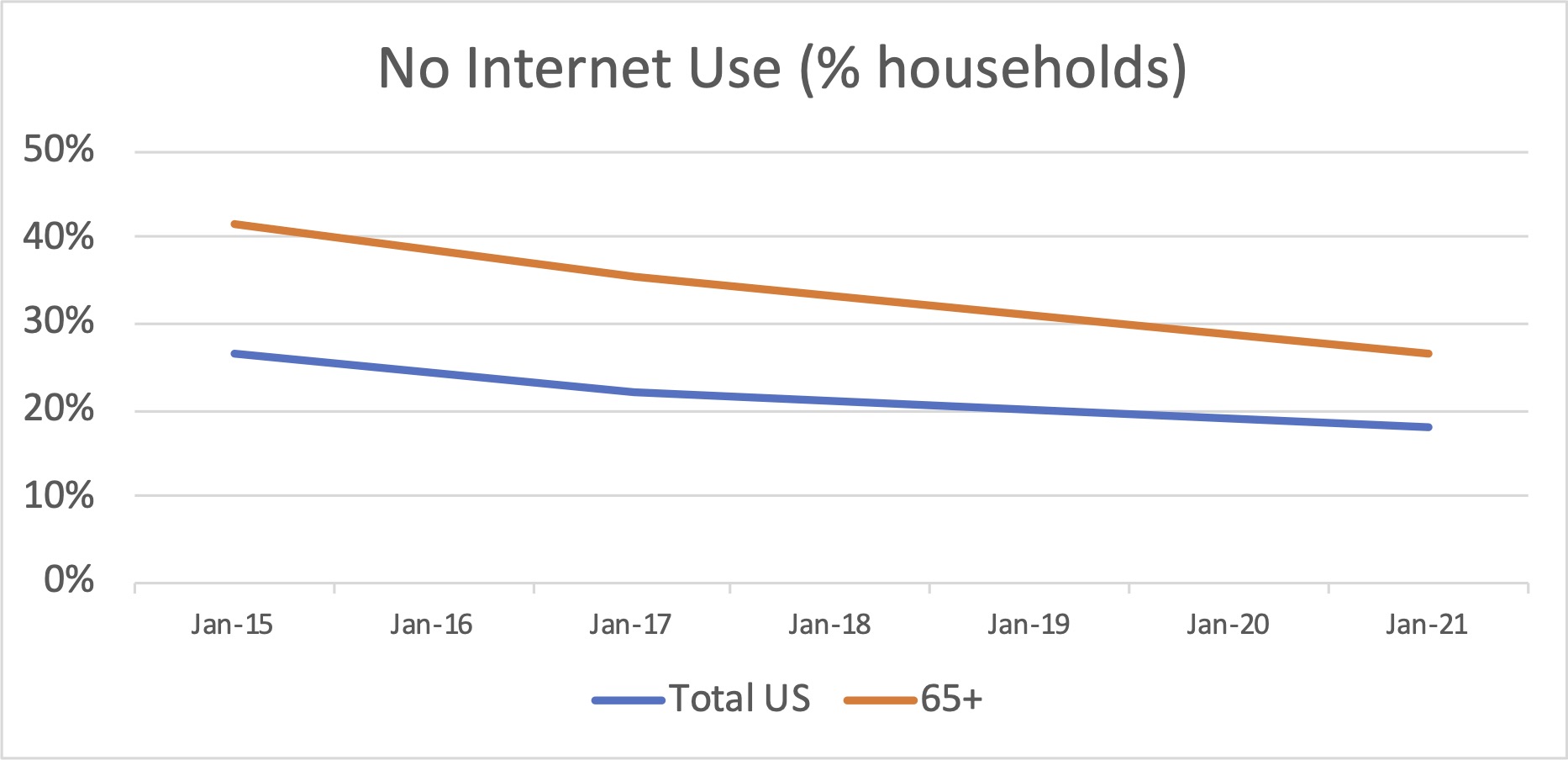 When it comes to people, the US Census has all the data. From its American Community Survey (ACS) summary files and detailed tables, we know as of November, 2021, for example, the US population (315 million), the number of housing units (133 million) and whether they are owner-occupied. Further, it tells the number of people in geographic locations, education and marital status, employment status (173 million), the percent aged 65+ (more than 55 million as of the date of the most recent survey). The questionnaire is publicly available on the Census website. While many of the questions are intriguing (and used for redistricting) and the data results are much-reported, technology ownership is rarely discussed. So here are some snapshots of changes in the ACS data from 2015 to 2021:
When it comes to people, the US Census has all the data. From its American Community Survey (ACS) summary files and detailed tables, we know as of November, 2021, for example, the US population (315 million), the number of housing units (133 million) and whether they are owner-occupied. Further, it tells the number of people in geographic locations, education and marital status, employment status (173 million), the percent aged 65+ (more than 55 million as of the date of the most recent survey). The questionnaire is publicly available on the Census website. While many of the questions are intriguing (and used for redistricting) and the data results are much-reported, technology ownership is rarely discussed. So here are some snapshots of changes in the ACS data from 2015 to 2021:
Wearables. The medical community continues to want to understand the likelihood of an older adult using a wearable device. Rather than theorize, the American Community Survey asks about it. As of July 2015, only 1% of the 65+ population owned a wearable device. By 2021, 11% of the 65+ population owned a wearable device – in comparison to 16% of the total population. The ACS does not spell out what type of wearable device -- but it includes smartwatches and fitness devices -- some barely in the market in 2015.
Smartphone use. No surprise, the penetration of smartphone ownership among the 65+ population is converging with ownership rate of the overall population. The growth rate from 32% of the 65+ 2015 to 66% of the 65+ having a smartphone by November 2021 is striking and correlates well with Pew's slightly earlier survey, but the ownership change among the entire survey population is just as compelling – from 53% to 70%.
Non-internet users. The data showing that ‘no one in the home is using the Internet’ is just as striking. In 27% of US households in 2015, no one was using the Internet at home. By 2021, that percentage had declined to 18%. In 2015, 42% of the 65+ households had no Internet use at home. By 2021, that had dropped to 26%. And that is also born out by Pew survey, and no surprise -- that age is the biggest determinant.




 When it comes to people, the US Census has all the data. From its American Community Survey (ACS)
When it comes to people, the US Census has all the data. From its American Community Survey (ACS) 

